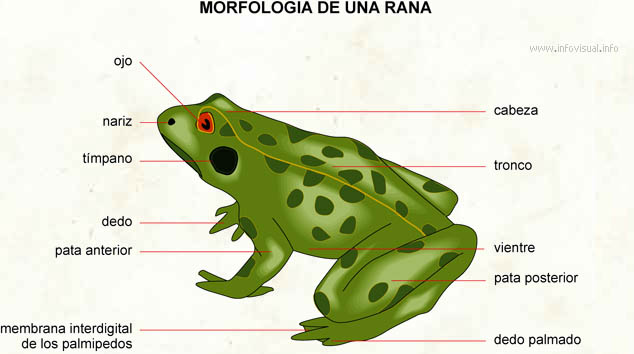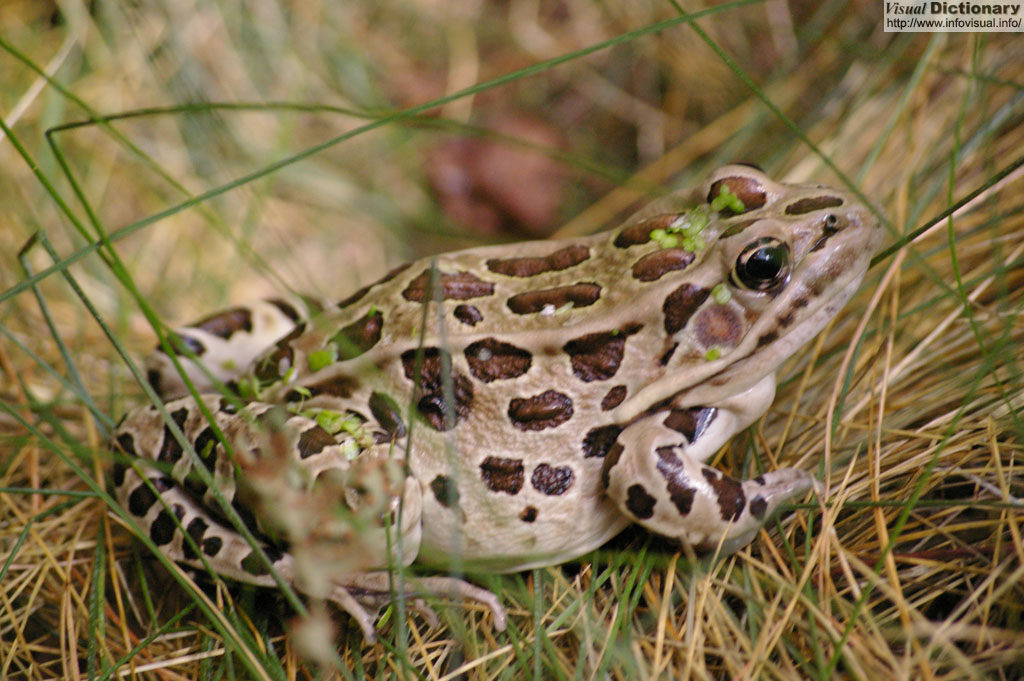Rana

Cabeza: parte superior de la rana.
Tronco: parte central de la rana a la que unen los miembros a la cabeza.
Vientre: parte inferior del tronco.
Pata posterior: miembro posterior de la rana.
Dedo palmado: uno de los ápendices articulado que une juntos por una piel fina.
Membrana interdigital de los palmipedos: piel fina que une los dedos juntos.
Pata anterior: miembro anterior de la rana.
Dedo: ápendice articulado de la pata anterior.
Tímpano: órgano del oído de la rana.
Nariz: orificio del sistema respiratorio de la rana.
Ojo: órgano de la vista de la rana.
Foto :

Amphibians, class Amphibia, such as frogs, toads, salamandesr, newts, and gymnophiona, are cold-blooded animals that metamorphose from a juvenile, water-breathing form to an adult, air-breathing form. Typically, amphibians have four limbs. Unlike other land animals (amniotes), amphibians lay eggs in water, as their fish ancestors did. Amphibians are superficially similar to reptiles. For the purpose of reproduction most amphibians are bound to have fresh water. A few tolerate brackish water, but there are no true seawater amphibians. Several hundred frog species in adaptive radiations, however, do not need any water whatsoever. They reproduce via direct development, an ecological and evolutionary adaptation that has allowed them to be completely independent from free-standing water. Almost all of these frogs live in wet tropical rainforests and their eggs hatch directly into miniature versions of the adult, passing through the tadpole stage within the egg. Several species have also adapted to arid and semi-arid environments, but most of them still need water to lay their eggs. Symbiosis with single celled algae that lives in the jelly-like layer of the eggs has evolved several times. The larvae breathe with exterior gills. After hatching, they start to transform gradually into the adult's appearance. This process is called metamorphosis. Typically, the animals then leave the water and become terrestrial adults, but there are many interesting exceptions to this general way of reproduction.
Animation : Rana esculenta
Gracias a YouTube de permitirnos d'observar este vídeo.
Objet virtuel : Rana esculenta
Gracias a YouTube de permitirnos d'observar este vídeo.